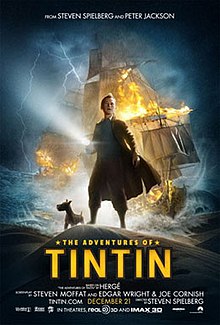When you think of full-length animated features, what studios come to mind? Obviously, there are heavy hitters like Pixar, Disney, and DreamWorks. These companies regularly put out high-quality movies and have collectively dominated the animation realm for decades. To stand out, some lesser-known animation studios have had to find a niche and stick to it. Whether it’s the classically-drawn anime of Studio Ghibli, the Claymation of Aardman Animations, or the stop-motion work of Laika, these studios have also created incredible animated films, but perhaps not at a rate that’s nearly as fast as the bigger animation studios. And yet, with the proliferation of better technology and faster processing power, there are plenty of lesser-known animation studios that are starting to compete with the “big three.” This week’s two films highlight some lesser-known animation studios.
Epic
Year: 2013
Rating: PG
Length: 102 minutes / 1.70 hours
While the bigger animation studios are mostly their own entities, some of the lesser-known studios receive much of their backing from large film studios, essentially making them an “animation subsidiary” of the larger conglomerate. Recently, Universal has relied on small studios like Illumination to create hits like the Despicable Me franchise. Even before Illumination became a prevalent force in the industry, studios like Blue Sky have been making animated movies for Fox since the start of the millennium. It hasn’t been until somewhat recently that these animation companies are known for their filmography, especially as they define the “look” that makes their studio distinctive. Blue Sky has seen success over the years with franchises like Ice Age and Rio, and especially with The Peanuts Movie (2015)—their most critically-acclaimed film to date. Personally, I like the charm of films like Epic (2013) from their catalog.
When Queen Tara (Beyoncé Knowles) chooses a leaf pod to be her heir as the Queen of the forest, a group of enemy Boggans chase after her and attempt to steal the seed. If they can get the pod to bloom in darkness, a blight can spread over the forest. A few Leafmen warriors come to her rescue but are too late to prevent her death. To save her forest, she magically shrinks nearby human M.K. (Amanda Seyfried) down and gives her the task of delivering the pod to a safe place where it can bloom in light and revitalize the forest. If M.K. can perform this task, she’ll return to normal size. When she arrives at Moonhaven—with the help of the Leafmen warriors—M.K. places the pod in the light of the full moon, only to have the light go out by the bats controlled by the Boggans’ leader, Mandrake (Christoph Waltz). It’s up to M.K. to use her father’s technology to drive away the bats and save the forest.
The Adventures of Tintin
Year: 2011
Rating: PG
Length: 107 minutes / 1.78 hours
Sometimes there are so many companies involved in producing a movie, it’s hard to tell where one ends, and the other begins. With subsidiaries and partnerships, sometimes the only way to have a novel idea for a film come to fruition is via the combined effort of multiple companies. While studios like Nickelodeon Movies are partially known for their animated fare, the real workhorse behind the motion-capture animated film The Adventures of Tintin (2011) was WingNut Films. Having previously shown how superior their motion-capture work was in films like The Lord of the Rings trilogy (2001-2003) and King Kong (2005), Peter Jackson’s WingNut Films was able to create a fully-digital film with The Adventures of Tintin (2011). The argument then comes as to whether or not using motion-capture makes an animated movie truly “animated,” but the result is still stunning, nonetheless.
Tintin (Jamie Bell) is a young boy who has a knack at finding great stories and great adventures. After buying a model of a boat called the Unicorn, he suddenly finds that a lot of people have interest in it. Tintin is disappointed when his canine companion, Snowy, knocks the Unicorn over and breaks it while in pursuit of a cat. Unbeknownst to Tintin, the model held a secret scroll which rolls under the furniture during the scuffle. When he learns there is more than one model of the Unicorn, Tintin also leans that each holds a scroll with a piece of a puzzle that leads to a treasure. Shortly afterward, he finds himself imprisoned on a ship, flying through a thunderstorm, and walking through the desert—all thanks to his new friend, Captain Haddock (Andy Serkis). Haddock’s ancestor is tied to the Unicorn legend, much like Haddock’s rival, Ivan Sakharine (Daniel Craig). Who will get to the treasure first?
2 sum it up: 2 films, 2 semi-obscure animation studios








